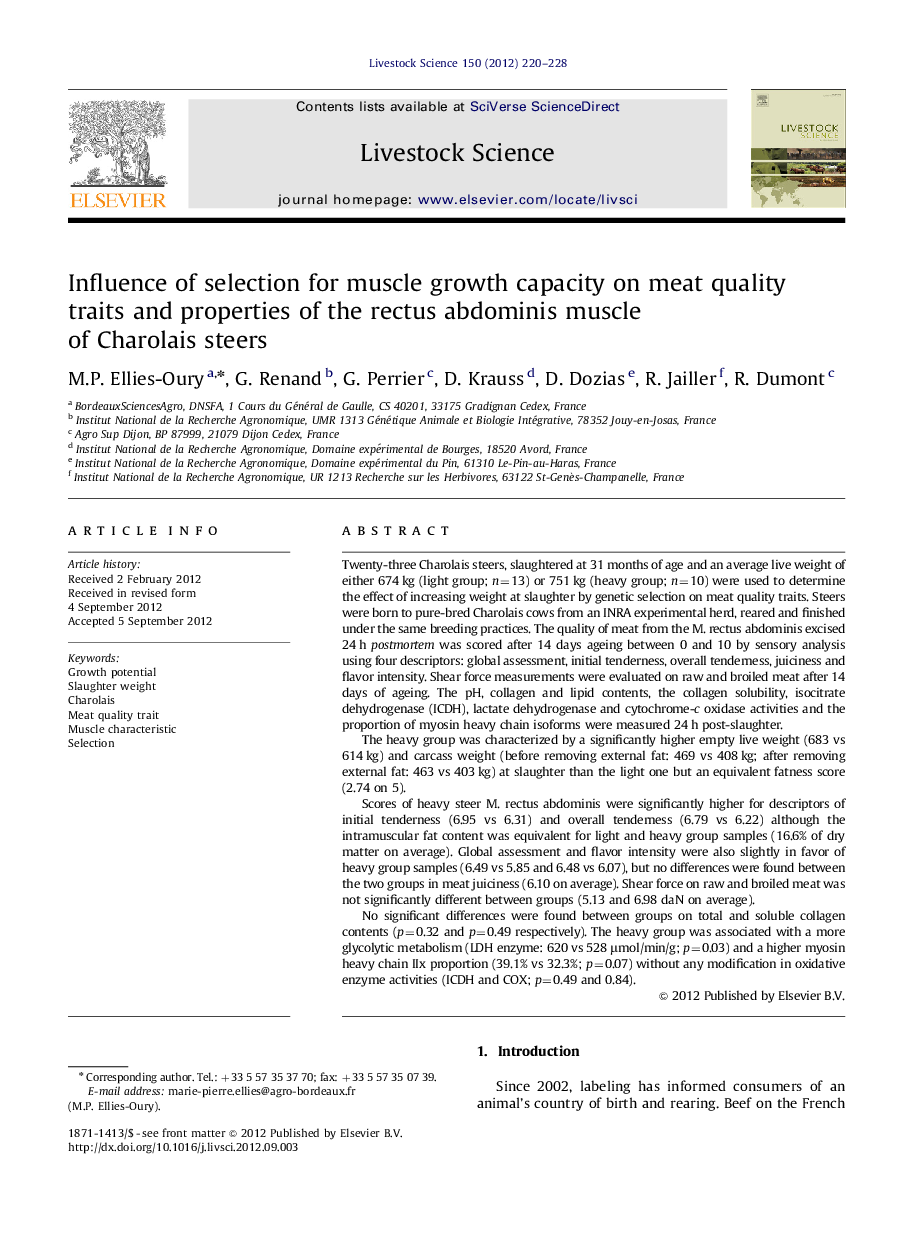| Article ID | Journal | Published Year | Pages | File Type |
|---|---|---|---|---|
| 5790493 | Livestock Science | 2012 | 9 Pages |
Twenty-three Charolais steers, slaughtered at 31 months of age and an average live weight of either 674 kg (light group; n=13) or 751 kg (heavy group; n=10) were used to determine the effect of increasing weight at slaughter by genetic selection on meat quality traits. Steers were born to pure-bred Charolais cows from an INRA experimental herd, reared and finished under the same breeding practices. The quality of meat from the M. rectus abdominis excised 24 h postmortem was scored after 14 days ageing between 0 and 10 by sensory analysis using four descriptors: global assessment, initial tenderness, overall tenderness, juiciness and flavor intensity. Shear force measurements were evaluated on raw and broiled meat after 14 days of ageing. The pH, collagen and lipid contents, the collagen solubility, isocitrate dehydrogenase (ICDH), lactate dehydrogenase and cytochrome-c oxidase activities and the proportion of myosin heavy chain isoforms were measured 24 h post-slaughter.The heavy group was characterized by a significantly higher empty live weight (683 vs 614 kg) and carcass weight (before removing external fat: 469 vs 408 kg; after removing external fat: 463 vs 403 kg) at slaughter than the light one but an equivalent fatness score (2.74 on 5).Scores of heavy steer M. rectus abdominis were significantly higher for descriptors of initial tenderness (6.95 vs 6.31) and overall tenderness (6.79 vs 6.22) although the intramuscular fat content was equivalent for light and heavy group samples (16.6% of dry matter on average). Global assessment and flavor intensity were also slightly in favor of heavy group samples (6.49 vs 5.85 and 6.48 vs 6.07), but no differences were found between the two groups in meat juiciness (6.10 on average). Shear force on raw and broiled meat was not significantly different between groups (5.13 and 6.98 daN on average).No significant differences were found between groups on total and soluble collagen contents (p=0.32 and p=0.49 respectively). The heavy group was associated with a more glycolytic metabolism (LDH enzyme: 620 vs 528 μmol/min/g; p=0.03) and a higher myosin heavy chain IIx proportion (39.1% vs 32.3%; p=0.07) without any modification in oxidative enzyme activities (ICDH and COX; p=0.49 and 0.84).
